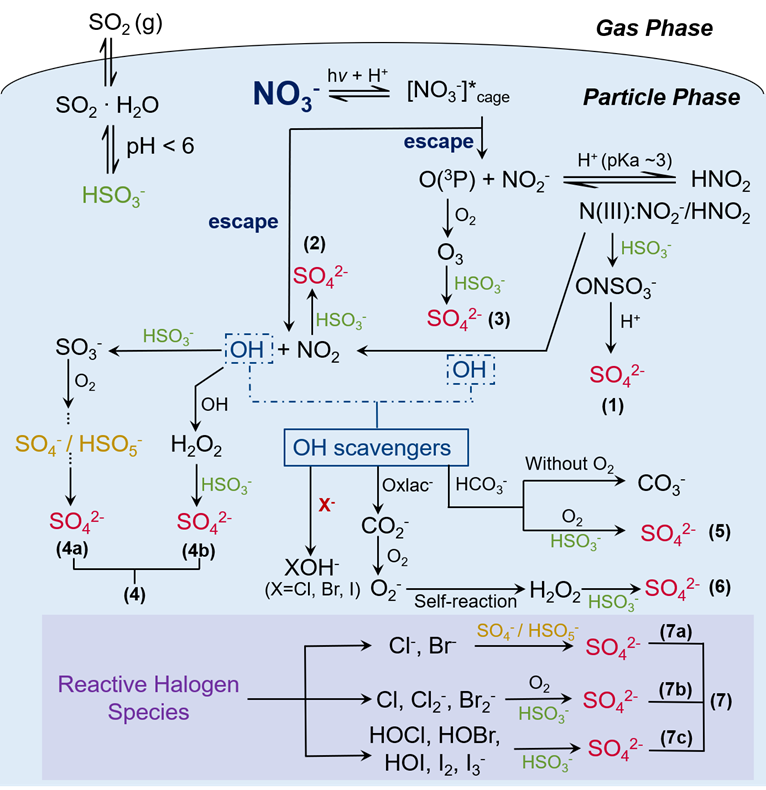Prof. Chak K. CHAN
Professor Chan obtained BSc in Chemical Engineering from the University of Texas at Austin in 1986 and PhD in Chemical Engineering from the California Institute of Technology in 1992. He is currently Adjunct Professor in School of Energy and Environment at City University of Hong Kong. He joined the Hong Kong University of Science and Technology (HKUST) as Assistant Professor in 1992 and rose to the rank of Professor in 2006. In 2010, he was appointed Founding Head of Division of Environment. He was Professor of Division of Environment and Professor of Chemical and Biomolecular Engineering at HKUST.
Professor Chan has over 25 years of research experience in air pollution and aerosol science. He specializes in aerosol water uptake and phase transformation, gas-aerosol interactions and the formation of secondary aerosols in the atmosphere, and laser spectroscopy of aerosols. Professor Chan received Haagen Smit Award of Atmospheric Environment in 2015, Second Prize of the State Natural Science Award in 2010, and First Prize of the Natural Science Award in 2007. He was the first winner of the Asian Young Aerosol Scientists Award. He was Science Advisor to Secretary of Environment, during his sabbatical at the HKSAR Environment Bureau in 2014. He served as Editor in Chief of Atmospheric Environment from 2008 to 2019.
Research Interests
Professor Chan's group focuses on aerosol chemistry and air pollution. Current research interests include on gas – particle interactions, heterogeneous reactions related to the formation of secondary air pollutants, and characterization of ambient aerosols.

Mechanisms for sulfate production during nitrate photolysis at 300 nm in the presence of halide ions or OH scavengers (NaHCO3 and oxalic acid). Zhang et al. (2020) Enhanced Sulfate Production by Nitrate Photolysis in the Presence of Halide Ions in Atmospheric Particles. Environmental Science and Technology.
https://doi.org/10.1021/acs.est.9b06445.
Recent Research Projects
- Particulate nitrate photolysis: Increase of oxidative capacity of atmosphere and production of secondary air pollutants
- Primary emission and production of secondary pollutants from photochemical aging of cooking and traffic emissions
- Formation of atmospheric brown carbon aerosols
- Amine/Ammonia chemistry in atmospheric aerosols
Selected Recent Publications
- Zhou, L.; Hallquist, Å. M.; Hallquist, M.; Salvador, C. M.; Gaita, S. M.; Sjödin, Å.; Jerksjö, M.; Salberg, H.; Wängberg, I.; Mellqvist, J.; Liu, Q.; Lee, B. P.; Chan, C. K. (2020) A transition of atmospheric emissions of particles and gases from on-road heavy-duty trucks. Atmospheric Chemistry and Physics. https://doi.org/10.5194/acp-20-1701-2020
- Mabato, B. R. G., Gen, M., Chu, Y. & Chan, C. K. (2019) Reactive uptake of glyoxal by methylaminium-containing salts as a function of relative humidity. ACS Earth and Space Chemistry. https://doi.org/10.1021/acsearthspacechem.8b00154
- Gen, M., Zhang, R., Huang, D. D., Li, Y. & Chan, C. K. (2019) Heterogeneous Oxidation of SO2 in Sulfate Production during Nitrate Photolysis at 300 nm: Effect of pH, Relative Humidity, Irradiation Intensity, and the Presence of Organic Compounds. Environmental Science and Technology. https://doi.org/10.1021/acs.est.9b01623
- Huang, D. D., Zhang, Q., Cheung, H. H. Y., Yu, L., Zhou, S., Anastasio, C., Smith, J. D., Chan C.K. (2018) Formation and Evolution of aqSOA from Aqueous-Phase Reactions of Phenolic Carbonyls: Comparison between Ammonium Sulfate and Ammonium Nitrate Solutions. Environmental Science and Technology. https://doi.org/10.1021/acs.est.8b03441
- Liu, T., Wang, Z., Huang, D. D., Wang, X. Chan, C. K. (2018) Significant Production of Secondary Organic Aerosol from Emissions of Heated Cooking Oils. Environmental science & technology letters. https://doi.org/10.1021/acs.estlett.7b00530

- Aerosol Chemistry
- Air Pollution